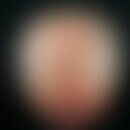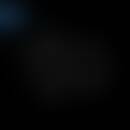Synonym(s)
HistoryThis section has been translated automatically.
DefinitionThis section has been translated automatically.
Very rare ichthyosiform erythrodermia that is already present at birth and can be classified between ichthyosis and erythrokeratoderma. With hair anomalies picture of the Netherton syndrome.
You might also be interested in
EtiopathogenesisThis section has been translated automatically.
Autosomal recessive inheritance, mutations in the SPINK5 gene (defect identified on chromosome 5q32). The gene encodes a multidomain serine protease inhibitor (Kazal type 5 protein [LEKTI]) expressed mainly in epithelial and lymphoid tissues. There is premature and increased degradation of corneodesmosomes
n, disruption of desquamation, ichthyotic efflorescences with impaired permeability and barrier function of the epidermis.
ManifestationThis section has been translated automatically.
Clinical featuresThis section has been translated automatically.
At birth diffuse reddening (erythroderma) of the integument. The erythroderma is accompanied by severe failure to thrive with recurrent tendency to infection. Diarrhoea symptoms. In the course of the first decade of life the skin changes: there is the formation of wandering, garland-like, map-like, brown-red hyperkeratoses fringed by double scales, with strongly changing form of the individual skin lesions. Lichenification of the large flexures of the joints. Intermittent blistering. Frequent accompanying hair anomalies ( bamboo hairs, trichorrhexis nodosa, pili torti), alopecia.
Atopy and disturbances in amino acid metabolism are also described. The tendency to type I allergies is increased. The total IgE is usually massive (>5000 kU/l). Furthermore, there is a tendency to HPV-induced skin diseases. The clinical picture is often confused with atopic dermatitis.
Increased activity of acid phosphatases as well as β-glucuronidase and transglutaminase in the skin scales. Alteration of the keratin composition, similar to psoriasis vulgaris.
HistologyThis section has been translated automatically.
- Acanthosis, hyperkeratosis, parakeratosis.
- Electron microscopy: proliferative hyperkeratosis with abnormal keratinization. Round-oval cytoplasmic PAS-positive corpuscles in the stratum corneum.
External therapyThis section has been translated automatically.
Internal therapyThis section has been translated automatically.
Note(s)This section has been translated automatically.
LiteratureThis section has been translated automatically.
- Bitoun E et al (2002) Netherton syndrome: disease expression and spectrum of SPINK5 mutations in 21 families. J Invest Dermatol 118: 352-361
- Comel M (1949) Ichthyosis linearis circumflexa. Dermatologica 98: 133-136
- DiGiovanna JJ et al (2003) Ichthyosis: etiology, diagnosis, and management. At J Clin Dermatol 4: 81-95
- Jenneck C et al (2007) Differential diagnosis of atopic eczema in childhood. dermatologist 58: 163-176
- Rille JH (1922) Demonstration 87th verse Dtsch Naturalists and doctors. Dermatol weekly 75: 1204
- Traupe H (1989) The ichthyoses. A guide to clinical diagnosis, genetic counseling and therapy. Springer, Berlin
Incoming links (11)
Clioquinol lotio 0.5-5%; Comèl syndrome; Eosinophilia and skin; Erythrokeratoderma rille-comel; Ilc; Keratosis rubra figurata; Netherton syndrome; PID; Primary immunodeficiencies and skin; Rille, johann heinrich; ... Show allOutgoing links (19)
Acanthosis; Acitretin; Alopecia (overview); Atopic dermatitis (overview); Atopy; Bamboo hair; Clioquinol; Clioquinol lotio 0.5-5%; Erythrokeratoderma (overview); Hyperkeratoses; ... Show allDisclaimer
Please ask your physician for a reliable diagnosis. This website is only meant as a reference.





